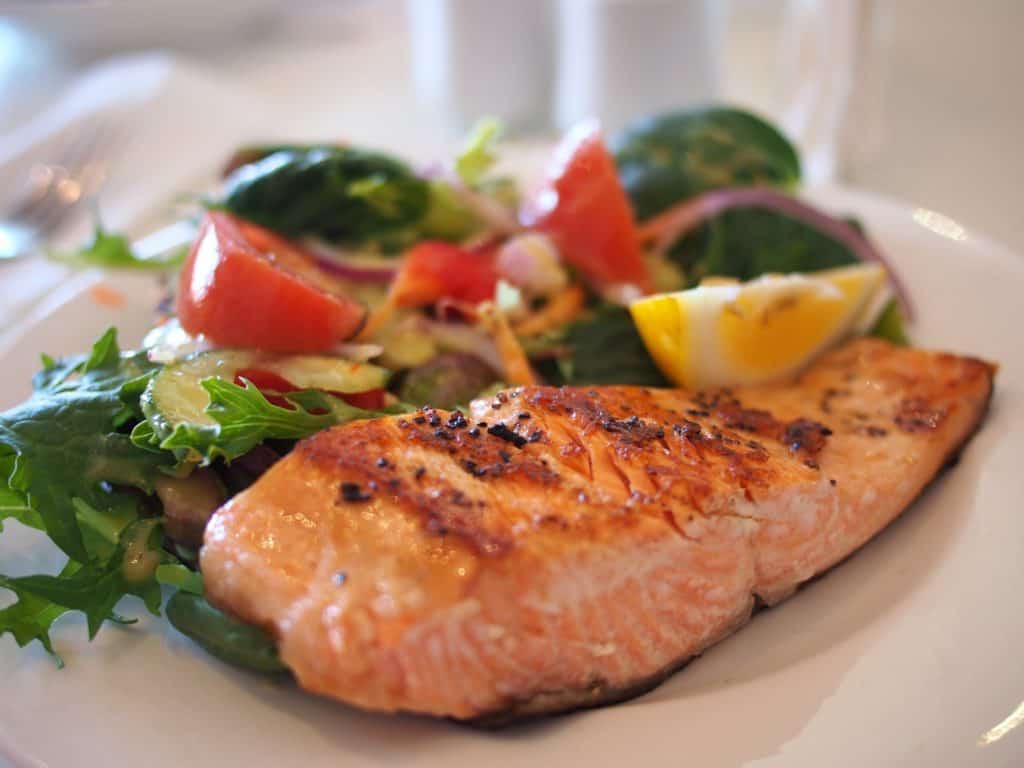What is Protein?
This is a very common question. After all, protein is held up very high in the fitness and nutrition worlds. It is held up high for a good reason, too. Protein is a necessity for our survival, performing tons of functions within the human body every single day, but what exactly is ‘protein’.
‘Proteins’ are compounds made up of amino acids (the building blocks of life), organized in different sequences. That’s really all they are. Nothing magical or mysterious about them. They are just arranged chains of amino acids.
But, how they are used is a far more complex topic.
Why Do You Need It?
Humans, and animals in general, use protein in tons ways and for hundreds of different functions. It is THE most important macronutrient there is for the human diet. We can survive without carbohydrates or fats, provided we have the other. We cannot survive without protein.
Protein’s main function resides in how it forms the basis of all of our cells and tissues. Everything we are is made from proteins. From muscles to skin to internal organs, blood, and DNA itself, we are a huge collection of proteins doing various things needed to keep us up and running.
Secondly, protein works to support our hormonal production. Low protein intake can result in things such as irregular menstruation, skin issues, sleep issues, and immune system problems. It does a LOT in terms of not only building our bodies, but also regulating them.
Protein also can be used as an energy source as a last resort. Since our muscles are metabolically expensive (use a lot of energy to keep running), they are among the first things to be broken down for energy if we don’t have a high enough calorie intake. It is hard for our bodies to use protein as energy, but it can, and will, do so if it feels like it needs to use them for that reason.
So, is it important? Yes.
Unlike in developing countries where food supplies aren’t always ideal, protein deficiencies should be rare in developed countries. A well balanced diet can easily overcome a protein deficiency, but a lot of western society folks don’t understand the importance of protein, and do suffer from protein deficiencies in one way or another.
Where Can I Get it From?
Protein can be consumed from a very large variety of sources. But, before we talk about where you can get it from, it is important to understand the difference between animal and plant proteins.
With the rising interest and adherence to vegetarian and vegan diets, we need to be able to properly balance protein sources in order to make sure we eat appropriate levels of Essential Amino Acids.
Protein Types: Essential vs. Nonessential
In the human diet, there are twenty amino acids. Out of those twenty amino acids, there are 9 essential and 11 nonessential.
Nonessential amino acids are those that our bodies can make themselves. Included in the list of nonessential aminos are:
- Alanine,
- Arginine,
- Asparagine,
- Aspartic acid,
- Cysteine,
- Glutamic acid,
- Glutamine,
- Glycine,
- Proline,
- Serine,
- and Tyrosine.
Essential amino acids, on the other hand, are those that our bodies cannot make, and must be ingested. Those 9 essential amino acids (EAAs) include:
- Histidine,
- Isoleucine,
- Leucine,
- Lysine,
- Methionine,
- Phenylalanine,
- Threonine,
- Tryptophan,
- and Valine.
That’s all good information, but how does it apply to me? Well, for starters, knowing what essential vs non-essential amino acids are forms our understanding of complete vs incomplete proteins.
Incomplete proteins are those that don’t contain all nine essential amino acids. Most plant protein sources are incomplete.
Complete proteins are sources that DO contain all nine essential amino acids. Animal proteins are all considered complete proteins, as are a very few plant based protein sources.
Protein Sources
Need some help?
Shape Success, Live Exceptionally
Hit that button, and get started today.
Whey
Whey is one of two proteins found in milk. It is the fastest absorbing protein source out there due to how easily digestible it is (for most people).
But, why is the quick absorption speed so powerful? Because, it is exactly what you want after an intense weight training session. Whey causes the greatest stimulus to the skeletal muscle protein synthesis process because it is digested so rapidly in the body.
In simple terms, it quickly shuffles nutrients to your cells, allowing your body to begin the repair process almost immediately.
You see, exercise breaks down your muscles and empties their glycogen stores. This means they are short on necessary materials to properly rebuild the damaged tissues. A quick digesting, complete protein, such as whey, can help them get on the right track for protein synthesis.
Whey protein also contains the widest variety of amino acids, the building blocks of muscle, compared to other types of proteins. Amino acids are the broken down components of protein, and the body requires a wide variety of them in order to optimize the muscle-building process. This gives whey protein another edge over other types of protein out there.
Casein
Casein protein is the other milk-based protein. It is also the slowest digesting protein available that you will most likely find on the shelf. Why would you want this a slow digesting protein like this? For the periods of time you know you won’t be able to eat anything.
Casein comes in handy when you really don’t have access to protein sources over the course of the day, such as if you’re at work or the time between bedtime and breakfast. In this way, you’ll be able to make sure that you’re optimizing muscle growth at all times.
Casein creates a sort of “gel” in the stomach (kind of like fiber does) which “drip feeds” protein into your system over period of up to 8 hours in most cases.
There are studies that go both ways as to whether casein is a good idea or not. Some say that casein is needed for covering long periods of time, while others say that if you consume enough protein during the day you don’t need to worry about it.
At the end of the day, it is up to you on how you consume protein throughout the day.
Egg
Egg protein is considered a “medium-digesting protein”. It isn’t the fastest, but is by far not the slowest protein source out there. As an animal protein, it has all nine of the EAAs just like whey.
When used as a supplement, it is often used in unflavored protein products and included in blended products.
Soy
Soy is actually a high-quality protein source, despite the reputation that it has gotten over the past few years. It contains all of the essential amino acids, which is awesome for a plant product.
However, it is still the least optimal type of protein compared to pretty much any other type of protein out there.
Too much soy has been shown to raise estrogen levels in men. However, in moderation, it is safe. Additionally, research has shown soy to be less optimal for muscle protein synthesis when compared to whey. I wouldn’t recommend it after a workout. You’re better off spending just a little more money on whey so that you can get the most gains for your money, unless your diet requires a more vegetarian type product, in which case I would find a good pea/rice blend.
Plant Proteins
Tons of plants have good amounts of protein in them. However, plant protein still isn’t as optimal as whey is for muscle building, as shown in multiple studies. Although it absorbs faster than casein, it doesn’t absorb nearly as fast as whey due to the increased fiber and fat content from the plant sources.
This also, in turn, increases its calories, which doesn’t make it an optimal choice for those who are on a calorie-restricted diet. Think of the difference in calories between 5 cups of quinoa for the same amount of protein as a serving of chicken breast. Again, if your diet requires it, it is worthwhile, but it is significantly harder to get enough protein as a vegan/vegetarian and stay within macros without a supplement.
Vegan powders are usually a blend of proteins from different vegan sources. The reason there is a blend is to help ensure that all nine EAAs are covered by the powder. Most often, they are combinations of brown rice, pea, and soy.
How Much Do I need?
The age old question of ‘how much protein do I need a day.’ That question is asked by everyone connected to either nutrition or fitness. Current FDA recommendations say you should eat 50g a day. Other people believe you need to eat 1 gram of protein per bodyweight pound (e.g. if you weigh 180lbs, you should eat 180g of protein a day). Some say you should aim for .5g/lb, and yet others still say you should eat 2g per body weight pound.
The answer, like anything else having to do with you individually, probably isn’t as black and white as people try to make it out to be.
Research has shown that eating too much protein can be just as bad for you as not eating enough. Some of the negative ways too much protein can hurt you include:
- Intestinal discomfort
- Dehydration
- Nausea
- Irritability
Other, more serious issues have also been attributed to high protein consumption include:
- Cardiovascular disease
- Liver and kidney problems
- Osteoporosis
- Type 2 Diabetes
Most negative issues occur when over 2 grams/lb are consumed daily for a long period of time. Many people have made pretty decent gains without any negative issues when they consume somewhere between 1 and 2 grams of protein for each pound in bodyweight.
As a beginner in the fitness world, you can most likely safely consume 1g of protein per pound of bodyweight without any issue. Plus, it’s easy to track.
Let Us help You Out
At CONDITIONerd we are here to help you achieve better physical and mental health through exercise. Check out the plans we offer to our customers and see if you could benefit from working with our team. And if you have questions, you can always contact a CONDITIONerd team member.
Personal trainers, like those found here, can help guide you on your pathway towards reaching your fitness goals, whether that is getting bigger, stronger, faster, more lean, or just generally feeling better.
We can get you setup with a periodized workout plan, supplement information, and advice on nutrition to help you reach your goals.
The only thing you need is some motivation and a willingness to change some old habits.
Get into contact with us to find out what membership is right for you. In a CONDITIONerd program, you’ll be surrounded by others who can help you to get where you want to be.
Generally, our clients start to see some pretty awesome changes in 2-3 months time, some sooner.

